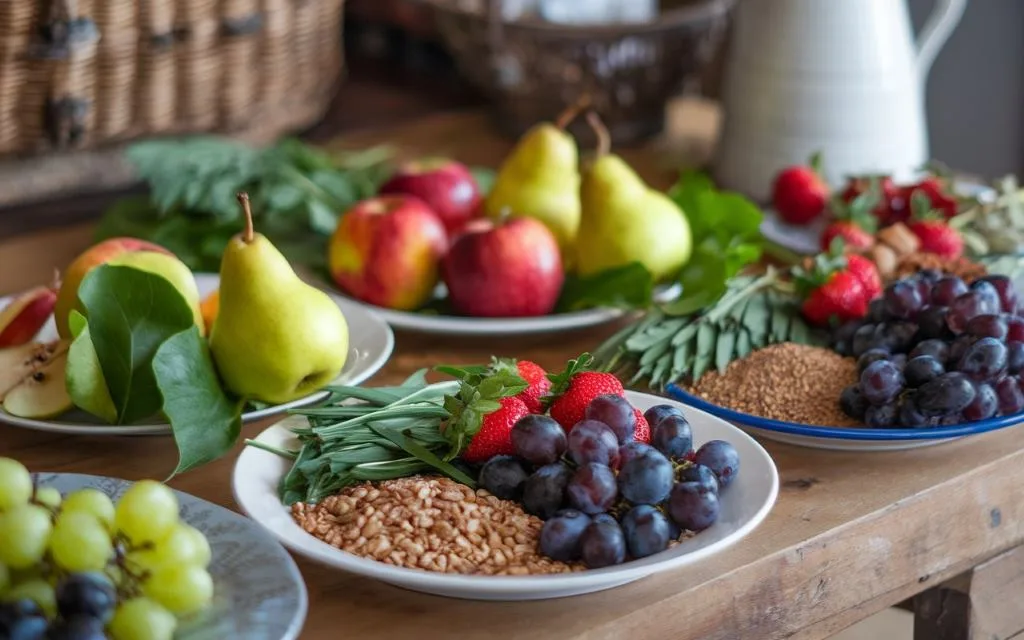“Eat your vegetables.” It’s arguably the first health advice most individuals recall hearing when they were young, and even as adults, they keep hearing it. Why wouldn’t they, too? Meals that would be deemed healthful are very impossible to prepare without veggies.
In spite of this, a lot of people still appear to adhere to the strict vegetarian diet they followed as kids. If that is you, you may be wondering if there are any healthy substitutes for veggies and if you can still eat healthy without vegetables and receive all the nutrients you require without having an excessive amount of plants on your plate.
Just 9% of adults consume enough fruits and 12% of adults consume enough vegetables to satisfy daily requirements, according to the Centers for Disease Control and Prevention. What a small number! Individuals following a low- or no-vegetable diet may be at a higher risk of developing obesity, Type 2 diabetes, cardiovascular disease, and some types of cancer.
Because they have less calories per volume than other foods, fruits and vegetables can also help those who are trying to reduce weight or maintain a healthy weight. This means that while the high-fiber, high-water content of fruits and vegetables will keep you full, the quantity of calories you consume will not be excessive.
Food Sources Other Than Vegetables
You’re right, veggies are a terrific way to get your fill of vitamins and minerals. However, it’s possible that other foods have those same micronutrients. Can I make a nutritious meal without veggies?
The majority of adult Americans do not consume the recommended amounts of calcium, potassium, fiber, magnesium, and vitamins A, C, D, and E. Your body will absorb these nutrients more effectively from food sources than from multivitamins; however, if you are not getting all the nutrients you need from your diet, you should discuss dietary supplements with your doctor.

Take a look at how the American Academy of Family Physicians divides each of these micronutrients into veggies and non-vegetable sources:
Calcium is a mineral that your body need to develop (and maintain) strong bones and teeth. Milk and other dairy products are the primary sources of calcium in the American diet. Even so, vegetable sources, such as cooked spinach (122.4 milligrams per half-cup) and soybeans (252.2 milligrams per half-cup), provide a calcium punch with significantly less calories.
Sweet potatoes, white potatoes, and a variety of beans provide potassium, which is essential for maintaining good blood pressure. It’s also available in a variety of fruits, including bananas, peaches, cantaloupe, and honeydew. If you’re not a fan of plant-based foods, try seafood like halibut, yellowfin, rockfish, and cod, or dairy alternatives like yogurt and milk.
Magnesium: This mineral benefits your muscles, arteries, and heart. Pumpkin, spinach, and artichokes are magnesium-rich vegetables. If none of those appeal to you, brown rice or nuts such as almonds, cashews, peanuts, and Brazil nuts can provide you with magnesium.
Pumpkin, sweet potatoes, carrots, spinach, turnip greens, and cantaloupe contain vitamin A, which is beneficial for visual development and cellular growth. Those following a no-vegetable diet will need to supplement their vitamin A intake with organ meats such as liver or giblets.
Vitamin C: While vitamin C is most commonly associated with your immune system, it is also a powerful nutrient that aids in the formation of collagen in blood vessels, bones, cartilage, and muscle. Sweet potatoes, cauliflower, broccoli, Brussels sprouts, and sweet peppers are excellent providers of antioxidants. If you prefer something sweeter, try guava, oranges, kiwis, strawberries, cantaloupe, papaya, pineapple, or mango.
Vitamin D: This vitamin helps your body absorb calcium, which is necessary for healthy bone and tooth growth. Since it can be challenging to obtain vitamin D through diet, a lot of goods, including breakfast cereal and orange juice, have been fortified with it. It is frequently present in non-plant sources like tuna, swordfish, and salmon.
Vitamin E: Often included in turnip greens, spinach, avocado, and tomatoes, this antioxidant helps prevent harm to the body’s cells. If you don’t like those, make sure you eat a lot of nuts, like sunflower seeds, peanuts, pine nuts, hazelnuts, and almonds.
Here’s an example of a vegetable where the concentration of a vitamin is lower: half a cup of cooked spinach contains 1.9 milligrams of vitamin E, half a cup of avocado contains 2.1 milligrams, one ounce contains 9.8 milligrams of sunflower seeds, and one ounce contains 7.3 milligrams of almonds.
You can experiment with blending fruit into tasty smoothies, making homemade dips or dressings for raw vegetables, making colorful kabobs with fruit or vegetable chunks, decorating homemade pizzas or baked potatoes with various vegetables, or even making homemade trail mix with dried fruit.
Other suggestions include adding colorful vegetables to salads, including beans and peas into recipes such as chili or soup, embellishing serving dishes with vegetable slices, and keeping freshly cut veggies on hand for quick additions to meals.
You will soon be on your way to a healthier you—one who no longer looks for healthy substitutes for vegetables but instead enjoys the best-tasting produce the grocery store has to offer—if you realize the significance of micronutrients for your general wellness and if you resolve to try new fruits and vegetables.
References
American Heart Association: “How to Eat More Fruit and Vegetables”
American Academy of Family Physicians: “Vitamins and Minerals: How to Get What You Need”
Centers for Disease Control and Prevention: “Only 1 in 10 Adults Get Enough Fruits or Vegetables”
Centers for Disease Control and Prevention: “How to Use Fruits and Vegetables to Help Manage Your Weight”
U.S. Department of Agriculture: “10 Tips: Kid-Friendly Veggies and Fruits”
U.S. Department of Agriculture: “Tips: Vary Your Veggies”





